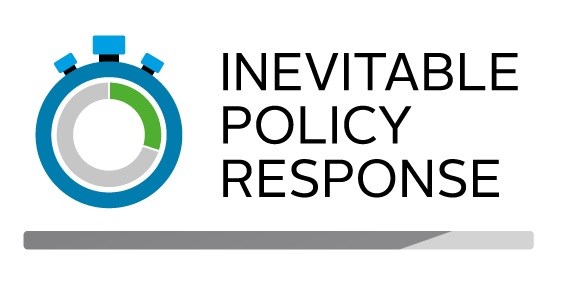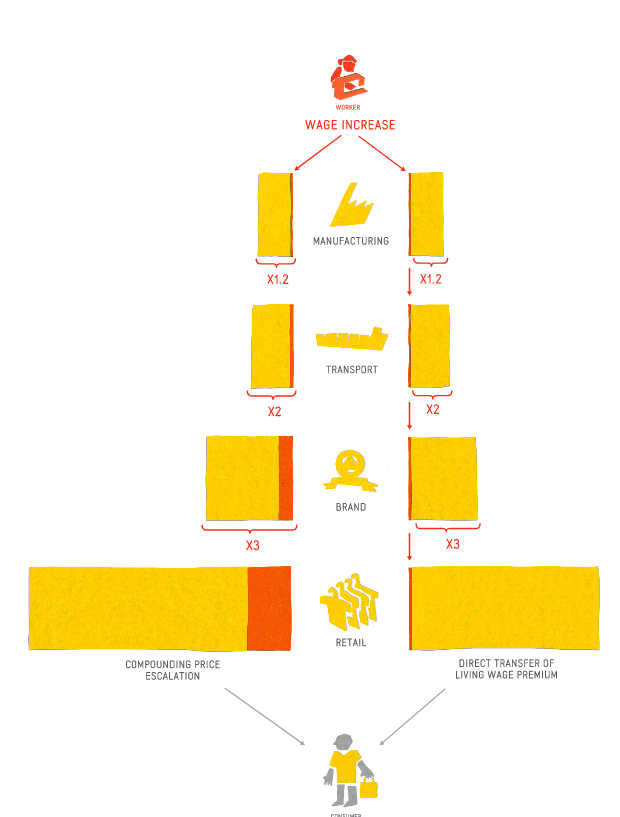
This is a series of three instalments. The first looked at what is meant by the ‘Inevitable Policy Response’. And this second, as well as the forthcoming third instalment, looks at how that could translate into the sphere of consumer goods industries.
In the first instalment we have explained what the Inevitable Policy Response is: In essence, the political and legislative approach to force climate action onto all, and in particular, economic players.
But what will be the effects on consumer goods industries?
What follows and this and next (third) post in this series, is a top line analysis of the likely consequence.
Maybe relevant to state is the fact: These consequences are not listed here for the first time – different scenarios interestingly arrive at roughly the same view, yet via different pathways.
A significant underlying reason to this phenomenon is of course the unavoidable consequences of the expected energy transition.
Effect 1: ‘Externalised’ costs are internalised.
What does that mean in short?
Externalities and full-costs will be included in the calculation of production costs, and therefore FOB prices. This means hence that – result of the compounding pricing calculations (page 19; Illustration 1) that still dominate just about any consumer goods industry – price-on-landing, cost price, and retail price of finished goods will see significant increases.
What are the newly internalised former externalities?
The short answer:
Carbon prices and full costs of natural resources.
Based on actual carbon emissions as well as carbon emission equivalents of other GHG gasses, and possibly other types of environmental pollution, and the total cost of of natural resource consumption
The long answer:
Up to the moment of writing, by far most of the production facilities in Asia are carbon fuelled. In the case of China – the largest global provider of consumer goods – around 75% of its carbon footprint stems from coal specifically, with very limited alternative options such as nuclear or renewable being used.
The related carbon impact however must not be seen as a – in this example – solely Chinese problem! But rather has an ‘imported’ (or: embedded) carbon footprint of countries that import such goods from coal-heavy economies.
Once the Inevitable Policy Response kicks in, global carbon prices will apply however. Which in turn mean that products produced with energy low-efficiency (and therefore CO2 heavy) coal sources will see a much higher fraction of carbon pricing ‘tagged’ onto them.
The same applies to other GHG gasses, and the non-direct costs of natural resource use.
Recap of the result:
As production costs increase consequence of the carbon prices and full-costs of resources added onto current production costs, the compound pricing chain of consumer products will see that added on cost being carried through – and multiplied – right through the end consumer (see Illustration 1).

Effect 2: Transport bottle necks
What does that mean in short?
- Longer delivery lead times for any type of overseas goods, no matter whether or not they where intended to be shipped by ship, plane, train, or truck.
- Smaller capacities will lead to significantly higher prices for time sensitive delivers, which applies in particular to perishable – hence predominantly agricultural, but not only – goods.
- Many products and goods won’t be shipped at all any more for the above 2 reasons.
- It won’t be possible to travel that easily any more to many current sourcing regions during the product development life cycle or for QA purposes. That again is a significantly increased risk of triggering lower quality, which again could mean higher costs overall.
Why is that the case?
As sever restrictions of any type of combustion engine (CE) units come into place consequence of the Inevitable Policy Response, initially there won’t be – bay far – sufficient shipping capacity based on non-CE technologies (e.g. renewable or atomic energy source, hydrogen powered etc).
The 2 main shipping channels severely affect by that are, shipping and air freight. Both of these industries to-date have close-toZero viable approaches using non-carbon energy sources for powering their engines: ships typically use heavy-fuel oil (on of if not the ‘dirties’ and environmentally most damaging type of engine fuel), and planes … enough said.
Consequences and Results:
- Significantly higher costs of landing, and therefore retail prices for those goods that are and can be shipped.
- Likely a significantly reduced selection for consumers at for all types of
- consumer goods: groceries, apparel, any type of appliances for house, garden, kitchen etc.
- several reduced availability of generic and ‘run of the mill’ medication (China and India are the 2 key producing markets for Active Pharmaceutical Ingredients APIs for e.g. antibiotics and many other ‘cheap’ components)
- technological products consisting of predominantly overseas produced components (electronics of all types, predominantly: from phones to printers, to CTs and MRIs).
Effect 3: New supply chain structures
What does that mean in short?
Because of Effect 1 and Effect 2 outlined above, business will re-assess and update their product costing calculations, product ranges, and supply strategies.
Supply chain departments will kick into gear and re-optimise the structure of supply chains, including where, how and with what materials products are being produced.
In some cases this may mean whole product ranges being phases out entirely because the required ingredients won’t be (easily, at a viable price) be available any more.
In all cases that will mean a re- thinking and re-costing of the distance-versus-price paradigm that most consumer goods, and also many high-tech products, follow in deciding where a product is being made.
Why is that the case?
The new inherent cost structures may make it suddenly more attractive – or at least equally attractive – to produce for example nearer by, reducing shipping costs on the one hand but also improving QA oversight. It may make it potentially even interesting to make short-term investees into skillet, labour and infrastructure, which then will be offset by ongoing lower production costs.
Consequence and Results:
The resulting supply chains, management approaches and so on, would be – dare I say it – not dissimilar of what is currently known as the ‘Inditex approach:
- Large amounts of small production unites close to the markets where the goods will be sold.
- Centralised Intellectual Property (IP → Design) management.
- Agile lead times and design cycles.
- And at the same time long-term, centralised and well hedged resource planning approaches.
—
This is the second of a 3-instalment series on the “Inevitable Policy’ Reponse”. The upcoming third instalment will continue to reflect upon how the IPR could potentially impact consumer good industries.
The previous first instalment explained what the IPR is, and what it means.

